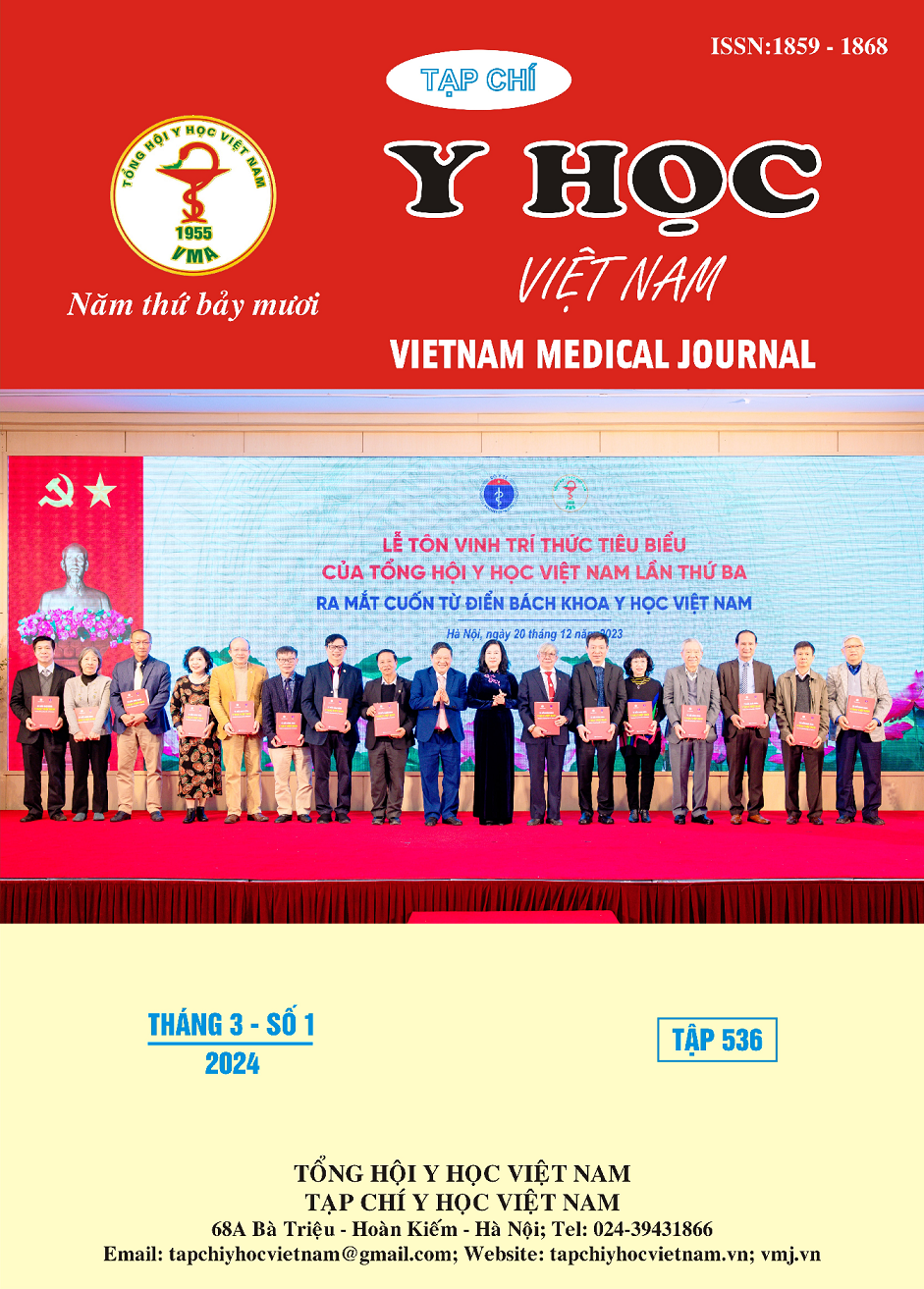CHARACTERISTICS OF LOWER EXTREMITY ARTERY DISEASE LESIONS IN PATIENTS WITH TYPE 2 DIABETES WITH CHRONIC KIDNEY DISEASE WITHOUT TREATMENT REPLACEMENT ON VASCULAR DOPPLER ULTRASOUND
Main Article Content
Abstract
Purpose: Characteristics of lower extremity artery disease lesions on Doppler ultrasound in patients with type 2 diabetes and chronic kidney disease at the Center for Kidney, Urology and Dialysis and the Department of Endocrinology - Diabetes in 2022-2023. Subjects and methods: Cross-sectional descriptive study, on 80 patients with type 2 diabetes with chronic kidney disease examined and treated at: Department of Endocrinology - Diabetes, Bach Mai Hospital and Kidney - Urology Center, Bach Mai Hospital. Results: The 80 patients had a mean age of 68.93 ± 10.28 years; Mainly male patients, average time to detect diabetes is 12.67 ± 7.32. The proportion of patients with stage 1 lower extremity artery disease is 46.3%; Next is the stage 2 injury group (with intermittent claudication) accounting for 43.8%. 98.8% of patients did not have foot ulcers. The rate of limb artery damage detected on ultrasound in 80 research patients was 52.5%. We did not note a relationship between age, time of disease detection, BMI, smoking, hypertension, HbA1c and left leg ABI index. However, gender factor is associated with ABI (p < 0.05). The average ABI in both the right and left legs was highest in stage 1 patients and lowest in stage 3 according to Fontain classification (statistically significant difference p < 0.01). Conclusions: No relationship was noted between age, disease detection time, BMI, smoking, hypertension, HbA1c and left leg ABI index. However, gender factor is associated with ABI (p < 0.05). The average ABI in both the right and left legs was highest in stage 1 patients and lowest in stage 3 according to Fontain classification (statistically significant difference p < 0.01).
Article Details
References
2. Nguyễn Hải Thủy. Bệnh động mạch chi dưới ở bệnh nhân đái tháo đường. Bệnh tim mạch trong đái tháo đường, NXB Đại học Huế. 2015.
3. Selvin E, Erlinger TP. Prevalence of and risk factors for peripheral arterial disease in the United States: results from the National Health and Nutrition Examination Survey, 1999-2000. Circulation. 2004;110(6):738-743.
4. Ostchega Y, Paulose-Ram R, Dillon CF, Gu Q, Hughes JP. Prevalence of peripheral arterial disease and risk factors in persons aged 60 and older: data from the National Health and Nutrition Examination Survey 1999-2004. J Am Geriatr Soc. 2007;55(4):583-589.
5. Reeder BA, Liu L, Horlick L. Sociodemographic variation in the prevalence of cardiovascular disease. Can J Cardiol. 1996;12(3):271-277.
6. Criqui MH, Fronek A, Barrett-Connor E, Klauber MR, Gabriel S, Goodman D. The prevalence of peripheral arterial disease in a defined population. Circulation. 1985;71(3):510-515.
7. Murabito JM, Evans JC, Nieto K, Larson MG, Levy D, Wilson PW. Prevalence and clinical correlates of peripheral arterial disease in the Framingham Offspring Study. Am Heart J. 2002;143(6):961-965.
8. Pasternak RC, Criqui MH, Benjamin EJ, et al. Atherosclerotic Vascular Disease Conference: Writing Group I: epidemiology. Circulation. 2004;109(21):2605-2612.
9. Kröger K, Stang A, Kondratieva J, et al. Prevalence of peripheral arterial disease - results of the Heinz Nixdorf recall study. Eur J Epidemiol. 2006;21(4):279-285.
10. Savji N, Rockman CB, Skolnick AH, et al. Association between advanced age and vascular disease in different arterial territories: a population database of over 3.6 million subjects. J Am Coll Cardiol. 2013;61(16):1736-1743.


